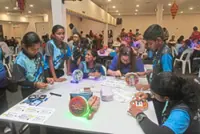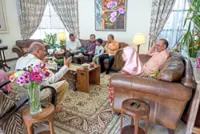The Pandey family celebrates Deepavali in Kuala Lumpur, melding tradition, Malaysian flavors, and a touch of nostalgia from their Indian roots. Photos: The Star/Raja Faisal Hishan
In Arti Pandey’s home, preparations for Deepavali are in full swing. Arti and her 17-year-old daughter Vageesha are busy adorning their home with vibrant Diwali decorations while engaging in the family’s annual spring cleaning in time for the festivities on Sunday.
Arti’s husband, Vinod Kumar Pandey, 45, lends a hand by hanging stringed mango leaves at the entrance of their home in Seri Sentosa, Kuala Lumpur.
Already a subscriber? Log in
Save 30% OFF The Star Digital Access
Cancel anytime. Ad-free. Unlimited access with perks.





